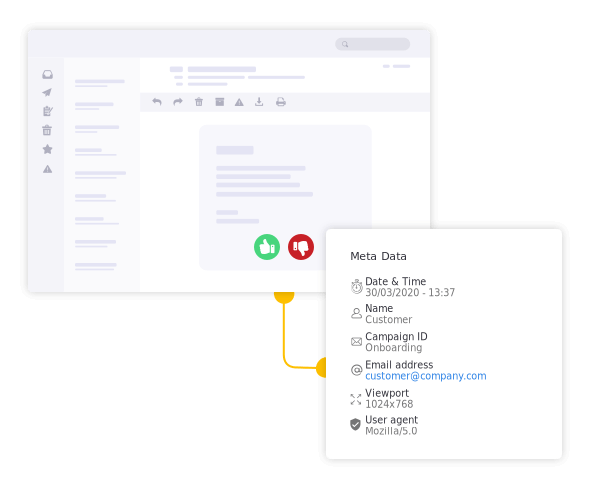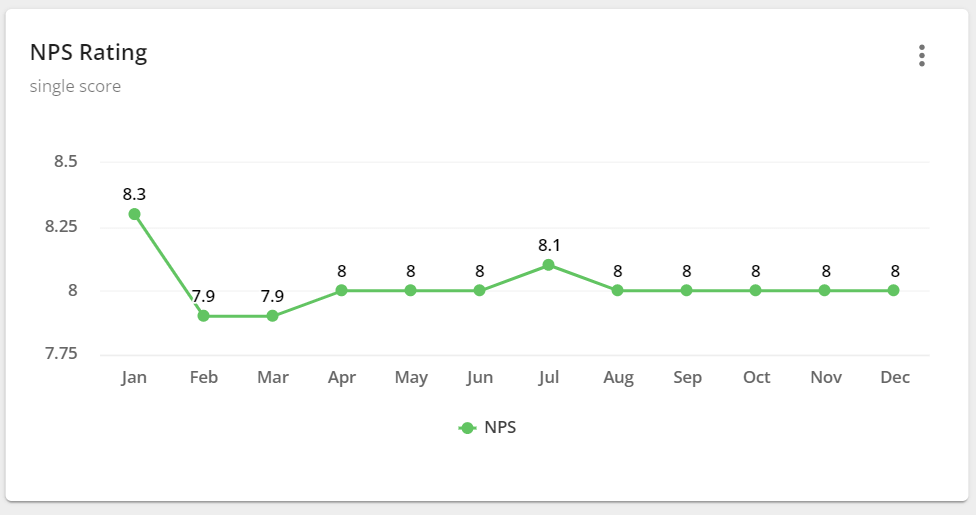Previously we’ve spoken about increasing online sales with customer feedback and focused on collecting the right feedback, at the right place in the funnel. It is also vital to fully analyse this data to get the most out the feedback and uncover the best insights, to really optimise your online ordering funnels.
Post updated in January 2023
Here are my top 10 tips on how to better analyse feedback and use it to drive online sales:
1. Analyse all feedback
This may sound obvious, but it is vital that you actually analyse all the feedback you get – otherwise why bother collecting it in the first place!
Whilst some feedback may give fairly standard or unremarkable details (which will also be useful – see the section below on trends), some may contain information that could potentially be a major breakthrough for your business.
2. Categorize (and sub-categorize) feedback
You will find rapidly that feedback will start to fall into more general categories – these could include the speed of your service (or lack of), accuracy, courtesy and helpfulness of particular staff, price and choice of products, availability or location etc.
Sorting feedback into categories will immediately help to show a wider picture of how the customer views your business and services. Of course some customers may comment on a number of categories and you can file these accordingly.

You will probably find that sub-categories are also very useful. This will help to highlight the less noticeable elements of your business operations, which could actually prove to be very significant to your overall proposition. Often these ‘hidden’ elements are the ones that are significantly pleasing or annoying your customers and website visitors.
3. Use negative and positive feedback
Inevitably feedback will range from complaints to (hopefully) high praise! It makes sense to divide the results using these criteria, as your response to each will vary greatly. It is worth pointing out at this juncture that positive comments are just as valuable as complaints because they show you what pleases and excites your repeat customers. Compliments will also motivate your team and thanking customers for positive feedback helps to build customer loyalty.
In a similar way, negative comments will highlight why customers leave and go to your competitors. You need to close the loop and resolve these problems – this is a well proven way of retaining more business. In both cases, your business will improve and thrive by reacting positively to feedback.

Try Email Campaign Feedback
Start delivering email messages your audience craves with Mopinion for Email.
4. Look at root causes
Naturally you need to understand what is driving customer loyalty if you want to improve it and customer feedback will help you to do this. Therefore, it is useful to make the analysis of root causes a priority above settling more complex or niche problems reported by your customers.
To achieve this, it is vital to have a management system in place which will qualify feedback and help you search through potentially large amounts of data. You also need to be able to determine the data which will help identify root causes of issues, before you move onto more complex (and sometimes niche) problems that will result from these.

5. Understand the value of the customer
All customers are valuable to your business, but some are more valuable than others! It is important to understand the value of a customer/group of customers so you can prioritise changes to your sales funnel or customer management regime.
For example, some customers may only buy from you during a sale whilst more loyal customers will continue to buy from you on an ongoing basis. Obviously repeat customers are more important to your revenue than those which ‘cherry pick’ certain deals, so it makes sense to prioritise the ‘voice’ of customers that come back to you again and again.
This also applies to making a business case for internal changes. For example, if you want to invest in schemes designed to drive up customer loyalty you need to be aware of how much this will be worth to your business compared to the cost of implementing it (investment cost Vs return on investment) to ensure it is worthwhile.
6. Look for trends
Of all the criteria you use to analyse customer feedback, identifying trends is one of the most important. Trends will show where you are getting things right or wrong and will become even more important when your volume of feedback increases.

Looking at individual feedback, you might find particularly strong opinions or complaints. However, these need to be seen in the context of your overall sales. For example, one customer may have a terrible experience with a product you have sold them, but then the rest of the customers who have bought the same item may give a glowing review.
Looking at longer term trends can also help to ascertain if you have a statistical aberration or a genuine trend that needs to be addressed. If a trend rises or decreases on a regular basis you can be fairly certain this is an important factor that will need to be focussed upon – be that a negative or a positive.
7. Don’t compare unrelated data
You may have an urge to compare different geographies, completely separate parts of the business or different survey results – but this can be very misleading. Taking results out of context (even if they may seem related) can offer a very distorted view.

For example, customers in different regions or countries can be notoriously different to those in other parts of the world (through cultural or lifestyle difference etc.) Some markets may be stronger than others, which can be for a number of different reasons and not necessarily down to the quality or availability of your products or services. Each sector or region needs to be seen in its wider complex and the feedback data considered with this in mind.
8. Alert the right teams and individuals within your organisation
With all the insights from your collected feedback it is important to ensure everyone involved is aware of the results and on board with your feedback programme.
Be it pricing issues, quality of products, logistical issues or website problems – the appropriate managers need to be made aware so they can carry out the right actions (even if this is to continue doing the right things!) Equally, customer-facing teams will be well-informed to help potentially frustrated customer with known queries.
To do this, you’ll want to carry out the three-step process:
- Organise a kickoff & invite all stakeholders. Gather all of the relevant stakeholders together and start from the beginning. This diversity in roles will not only provide several viewpoints that are unique to your own, but it can also spark inspiration for the feedback agenda as well as give you the opportunity to look beyond your own team and get more support internally. Discuss what you can achieve with feedback and start assigning ‘subject matter experts’.
- Come up with a game plan. Here you’ll want to think big but start small. Fight the urge to collect feedback everywhere all at once. Try outlining one or two online processes that you want to collect feedback in and start with those. You can gain a lot of knowledge based on these insights (and relatively quickly). So start by making small improvements and monitoring their impact on your metrics. Once you’ve mastered that, you’re ready to move on to more complex processes. Then it’s time to start scheduling regular meetings to run through the results.
- Start prioritising results. Start thinking about which areas of your website are most important to your organisation and how you are going to measure their performance. If you’re looking to prioritise your feedback results it helps to keep a close eye on your KPIs. Top KPIs in digital feedback programmes often include: Net Promoter Score (NPS), Customer Satisfaction (CSAT), Customer Effort Score (CES) and Goal Completion Rate (GCR). And since you’re working with a team, be sure to continuously keep communications tight. Lastly, it’s important to keep your teams focused on opportunity. You are all working towards a common goal and that is to provide an optimal customer experience that will satisfy your customers.
9. Consolidate results and determine a plan of action
Once you have sorted through and understand the feedback results it is time to put together a feasible and effective plan of action to address any issues.
You also need to ensure that the parts of your service which work well and have had positive feedback continue to do this going forward. When you are addressing issues it can be easy to disrupt the parts of the process that work well, so you need to be aware of this.
10. Use automated tools to reduce your workload
Hopefully your feedback process will prove to be popular with your customers and generate a high volume of results. This is a ‘nice problem’ to have, but you might consider using specialised and automated tools to help you make sense of it, such as text and sentiment analysis. This will identify which words are used most and in which combinations, along with whether feedback is positive, neutral or negative.

Automatic learning systems are the next step for analysing feedback. These use machine learning to automatically assign feedback to the right category and ascertain which feedback is useful, depending on your chosen criteria. This offers a truly powerful and accurate way of assessing feedback, yet reduces the hours required by your team to do so.
Ready to see Mopinion in action?
Want to learn more about Mopinion’s all-in-1 user feedback platform? Don’t be shy and take our software for a spin! Do you prefer it a bit more personal? Just book a demo. One of our feedback pro’s will guide you through the software and answer any questions you may have.








